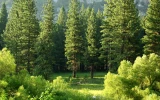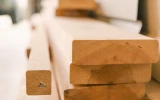How Much Money Can You Get for Timber per Acre? (2023 Prices)
The value of timber is usually determined by its volume, quality, and species, as well as market demand and supply. Moreover, their prices can vary depending on the region, the harvesting method, and the transportation costs. If you are wondering how much money you can make from selling timber per acre, this article will provide insights based on the latest market trends and prices.
Hardwood saw timber, such as oak, maple, cherry, and walnut, has an estimated value between $1,500 and $6,000. Meanwhile, softwood saw timber's estimated value per acre ranges only from $500 to $2,000. Other timber species, such as poplar and Cypress trees, have values between $500 and $3,000.
The quality of the timber also affects its value; for example, trees that are straight and have few knots are more valuable than trees that are crooked or have many knots. Let's see what other factors can affect the value of your timber and learn some tips on how to maximize your profit while ensuring sustainable forest management.
Summary
- Red and white oak trees can be worth anywhere from $2,000 to $4,000 or more per acre, depending on their size and quality.
- Hickory and maple trees are also highly valued for their strength, durability, and beauty, with mature forests commanding prices of $1,500 to $3,000 per acre or more.
- Southern Yellow Pine (SYP) is a fast-growing tree with a straight trunk, and timberland can range in value from $500 to $1,500 per acre.
- A well-managed plantation of Douglas Fir and Sitka Spruce can be worth anywhere from $1,000 to $2,000 per acre.
- The estimated value of eastern red cedar and cypress ranges from $1,500 to $3,000 per acre, depending on various factors.
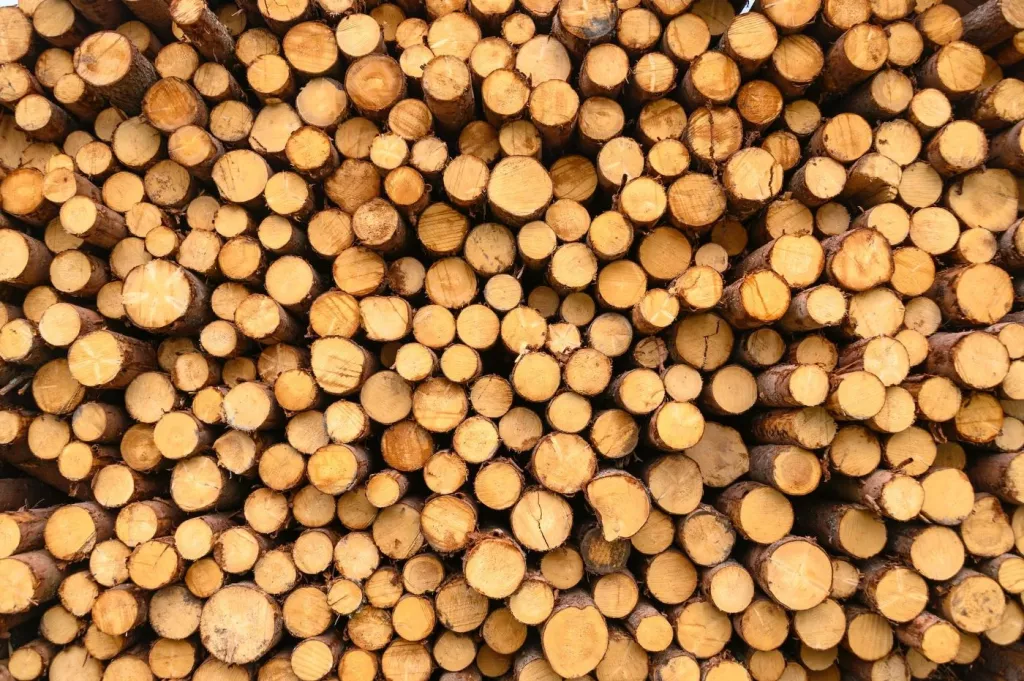
On this page:
Price Per Acre Of Hardwood Saw Timber Species
The table below shows the current value per acre of the following hardwood timber species:
| Hardwood Saw Timber Species | Estimated Value per Board Foot | Estimated Value per Acre |
|---|---|---|
| Red Oak | $2.00 - $4.00 | $2,000 - $4,000 |
| White Oak | $2.00 - $4.00 | $2,000 - $4,000 |
| Hickory | $1.50 - $3.00 | $1,500 - $3,000 |
| Maple | $1.50 - $3.00 | $1,500 - $3,000 |
| Cherry | $2.50 - $5.00 | $2,500 - $5,000 |
| Walnut | $3.00 - $6.00 | $3,000 - $6,000 |
Red and white oak
Depending on the size and quality of the trees, a single acre of red oak or white oak forest can be worth anywhere from $2,000 to $4,000 or more.
The value of red oak and white oak comes from their slow growth rate and the fact that they can take up to 100 years to reach maturity. This means that the wood these trees produce is dense and strong, making it ideal for use in high-quality products.
In addition to their high quality, red oak, and white oak are also in high demand due to their scarcity. As forests are cleared for development or other uses, the supply of these trees decreases, driving up the price of the remaining trees.
Check out this article to know the value of a large oak tree measuring 30, 50, and 100 feet tall.
Hickory and maple
In general, mature hickory and maple forests that have been well-managed and are of high quality can command prices of $1,500 to $3,000 per acre or more.
Hickory has a light to medium brown color and a distinctive grain pattern while maple has a light to medium brown color and a subtle grain pattern.
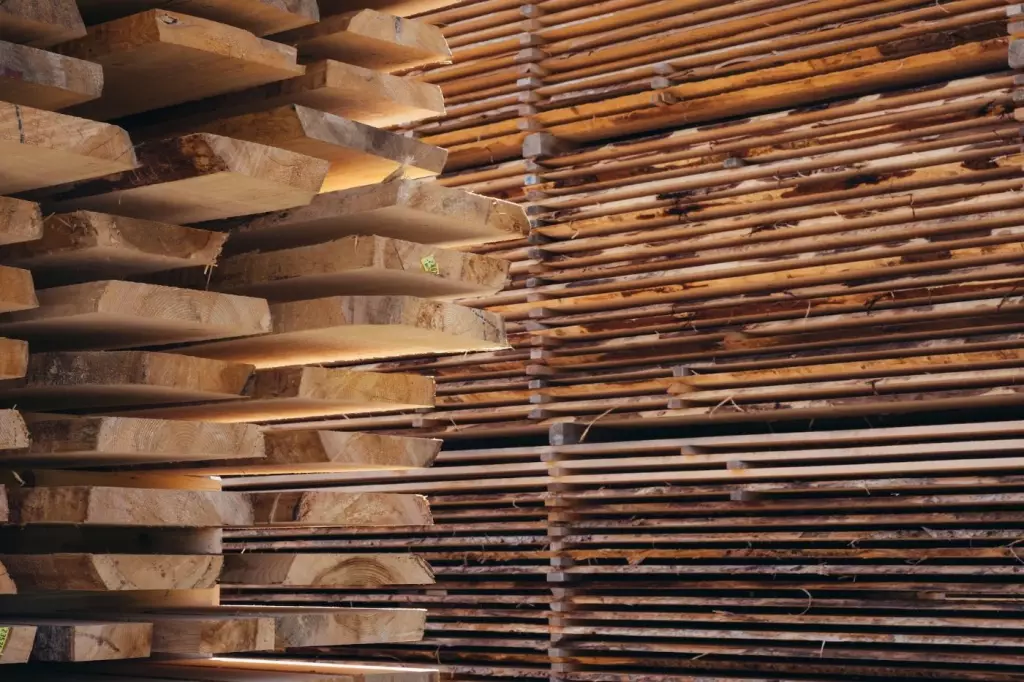
The wood of these trees is prized for its strength, durability, and beauty, and is used in a wide variety of applications, including furniture, flooring, cabinetry, and musical instruments.
The value of hickory and maple forests can vary depending on a number of factors, including the age and size of the trees, the quality of the wood, and the demand for hardwood products in the market.
If you're curious about the profit per acre of maple trees and other species of trees, you can check out this article.
Cherry
Cherry is a valuable timber tree species due to its high-quality wood, which is prized for its beautiful grain and rich color. It's also one of the most profitable trees to grow for lumber.
In general, a well-managed cherry timberland can be worth anywhere from $2,500 to $5,000 per acre or more.
It is commonly used in fine furniture, cabinetry, flooring, and decorative veneers, as well as for musical instruments like guitars and pianos.
In addition to its aesthetic appeal, cherry wood is also durable and resistant to decay, making it a popular choice for outdoor applications like decking and fencing.
These qualities make cherry a highly sought-after tree species in the timber industry, and as a result, it can command a high price on the market.
Walnut
Walnut trees are highly valued for their wood, which is prized for its beauty, durability, and workability. The wood is often used for high-end furniture, flooring, cabinetry, and gunstocks, among other things.
The demand for walnut wood is high, especially in the United States and Europe, and this drives up the price.
Additionally, walnut trees are relatively slow-growing, and it can take up to 30 years for a tree to reach maturity and produce a significant amount of timber. This means that the supply of walnut wood is limited, which further increases its value.
Walnut trees that are large, straight, and free of defects are especially valuable, as they can yield high-quality lumber.
Price Per Acre Of Softwood Saw Timber Species
The table below shows the current value per acre of some popular softwood timber species:
| Softwood Saw Timber Species | Estimated Value per Board Foot | Estimated Value per Acre |
|---|---|---|
| Southern Yellow Pine | $0.50 - $1.50 | $500 - $1,500 |
| Douglas Fir | $1.00 - $2.00 | $1,000 - $2,000 |
| Sitka Spruce | $1.00 - $2.00 | $1,000 - $2,000 |
Southern Yellow Pine
Southern Yellow Pine (SYP) is a species of pine tree native to the southeastern United States. It is a fast-growing tree that can reach heights of up to 100 feet and has a straight trunk that is free of knots, making it an ideal timber tree species.

In general, SYP timberland can range in value from $500 to $1,500 per acre, with older, larger trees and higher-quality timber commanding higher prices. They are relatively inexpensive compared to other softwood species.
SYP is highly valued for its strength, durability, and versatility, and is used in a wide range of applications, including construction, furniture, and paper production. It also makes railroad ties, utility poles, and other industrial products.
Douglas Fir and Sitka Spruce
Douglas Fir and Sitka Spruce are both highly valued timber tree species due to their fast growth, straight trunks, and high wood quality. Generally, a well-managed Douglas Fir or Sitka Spruce plantation can be worth anywhere from $1,000 to $2,000 per acre.
They are commonly grown in the Pacific Northwest region of the United States and Canada, where the climate and soil conditions are ideal for their growth.
Douglas Fir is a popular tree species for timber production due to its strength, durability, and versatility. It is commonly used for construction, furniture, and paper production. It's also one of the fastest-growing timber trees, which can grow for at least 2–3 feet per year.
Sitka Spruce, on the other hand, is known for its high strength-to-weight ratio and is commonly used in aircraft construction, musical instruments, and boat building.
Price Per Acre Of Other Timber Species
| Other Timber Species | Estimated Value per Board Foot | Estimated Value per Acre |
|---|---|---|
| Poplar | $0.50 - $1.50 | $500 - $1,500 |
| Eastern Red Cedar | $1.50 - $3.00 | $1,500 - $3,000 |
| Cypress | $1.50 - $3.00 | $1,500 - $3,000 |
Poplar
Poplar is a popular timber tree species because it is fast-growing and has a straight, uniform trunk. It is commonly used for making furniture, paper, and plywood, among other things.
In general, younger trees are less valuable than mature trees, and trees with defects or other issues may have lower value as well.
An acre of poplar trees may have less value than other timber species as they tend to have a lower density than some other species, such as oak or pine. However, they remain to be one of the most profitable hardwood trees.
They also tend to have a shorter lifespan than some other species, such as oak or maple so they need to be harvested and replanted more frequently. They are also softer and less durable than these other woods, which can make them less desirable for certain applications.
Eastern Red Cedar and Cypress
Red Cedar and Cypress are two popular timber tree species that are widely grown in the United States. These trees are highly valued for their wood, which is used in a wide range of applications, including furniture, flooring, and construction.
The estimated value of these trees ranges from $1,500 to $3,000 per acre, depending on a variety of factors, including the age and size of the trees, the location of the land, and the demand for the wood.
Red Cedar is a type of coniferous tree that is native to North America. It is known for its reddish-brown bark and fragrant wood, which is lightweight, durable, and resistant to decay.
It is commonly used in the production of cedar shakes and shingles, as well as in the construction of outdoor furniture and decks.
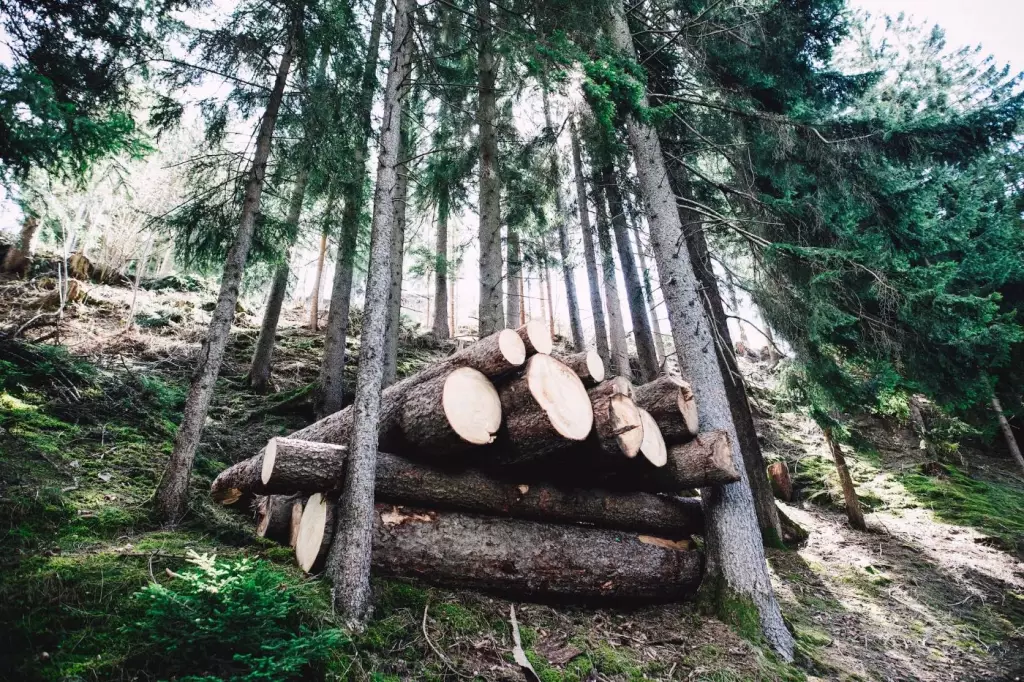
On the other hand, Cypress is a deciduous tree found in wetland areas of the southeastern United States. It is highly valued for its wood, which is resistant to decay and insect damage.
Cypress wood is commonly used in the construction of outdoor furniture, decks, and docks, as well as in the production of siding and paneling.
Factors Affecting The Value Of Timber
In this section, we will discuss some of the key factors that affect the value of timber such as species, size, quality, and products:
Different species of trees have different values
Hardwood trees are generally more valuable than softwood trees. When it comes to quality, trees that are straight and have few knots are also more valuable than trees that are crooked or have many knots.
The size and height of the trees also affect their value
Larger trees are generally more valuable than smaller trees. Taller trees are also more valuable because they produce longer logs, which are more valuable than shorter logs.
The products that can be made from the timber also affect its value
Sawtimber is more valuable than pulpwood because it can be used to make lumber. Other products that can be made from timber include plywood, paper, and furniture.
Timber Management Practices To Maximize Profit
There are a few practices you can implement to maximize your profits, such as the following:
Plan strategically
It would help if you have a long-term plan in place that takes into account your goals, the age of your trees, and the current market conditions. This will help you make informed decisions about when to harvest your timber and what sale method to use.
Thinning helps promote the growth and health of the remaining trees
Thinning is the process of selectively removing trees from a stand to promote the growth and health of the remaining trees. By removing trees that are competing for resources, the remaining trees can grow larger, which can increase the value of the timber.
Thinning can be done at various intervals throughout the life of a stand and can help increase the value of your timber by producing higher-quality logs.
Clearcutting can also be a useful tool for maximizing profits in a timberland
Clearcutting is the process of harvesting all the trees in a stand at once. It can produce a large amount of merchantable wood.
However, while this method can produce a large amount of merchantable wood, it can also have negative impacts on the environment and the long-term profitability of your timberland.
Even-aged management can help produce a consistent supply of high-quality timber
Even-aged management involves growing trees of similar age and size. This can be achieved through clearcutting or other harvesting methods.
Even-aged management is another useful practice for maximizing profits in a timberland, as it produces a consistent supply of high-quality timber.
However, it may not be suitable for all types of timber, and other management practices may be necessary to ensure the long-term health and profitability of the timberland.
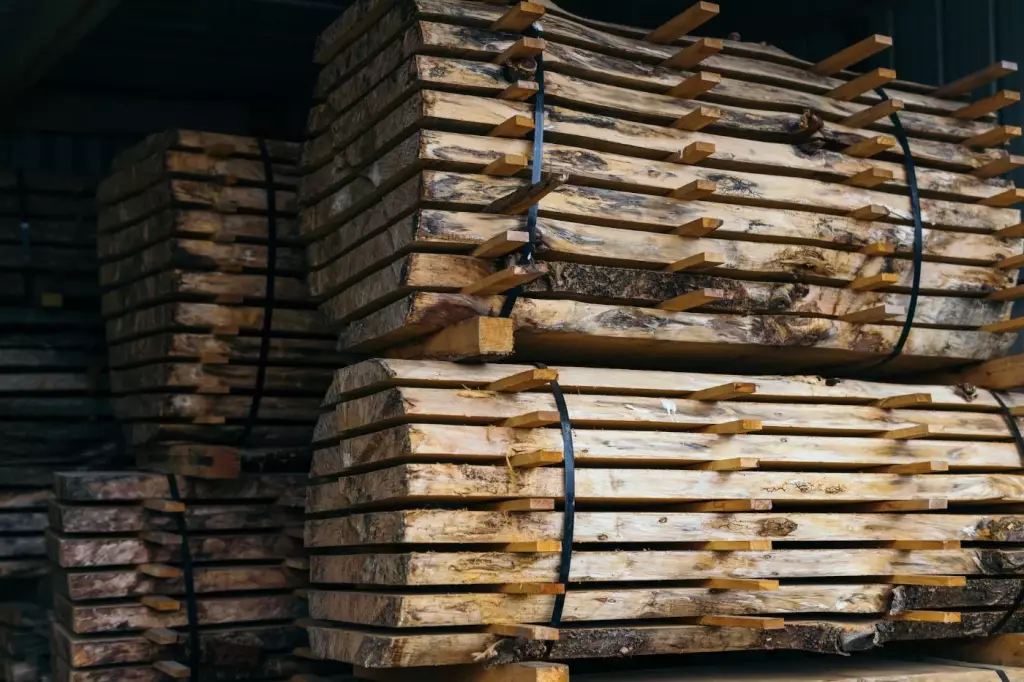
Plantation pine stands and natural pine stands
Plantation pine stands are typically managed for pulpwood and saw timber production. These stands are often thinned multiple times throughout their life to promote the growth of high-quality trees.
Natural pine stands, on the other hand, are typically managed for saw timber production and may be managed using selective harvesting methods, such as thinnings, to promote the growth of high-quality trees.
